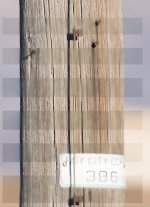I am trying to make sense of all the different Hoya polarizing filters. I went on Amazon and now I am really confused. From what I have been reading the Hoya HD filter is the one to get but what are all the other ones? Also what is the difference,besides price, between the HD and the HD2?
Here Ithought there would be HD and non-HD filters, boy was I wrong.
Hoya HD Circular Polarizer Filter
Hoya 67mm HD2 Polarizer Filter
Hoya PRO1 Digital Polarizer Filter
Hoya HRT Circular PL Polarizer Multi-Coated Glass Filter
Hoya Alpha Circular Polarizer Filter
Hoya EVO SMC Circular Polarizer Super Multi-Coated Slim Frame Glass
Hoya - Filter - circular polarizer
Hoya 67mm Linear Polarizer Glass Filter
Hoya Moose 67mm Warm Circular Polarizer Filter
I’m guessingsome of these are probably for film cameras?
I’m ready to be educated.

